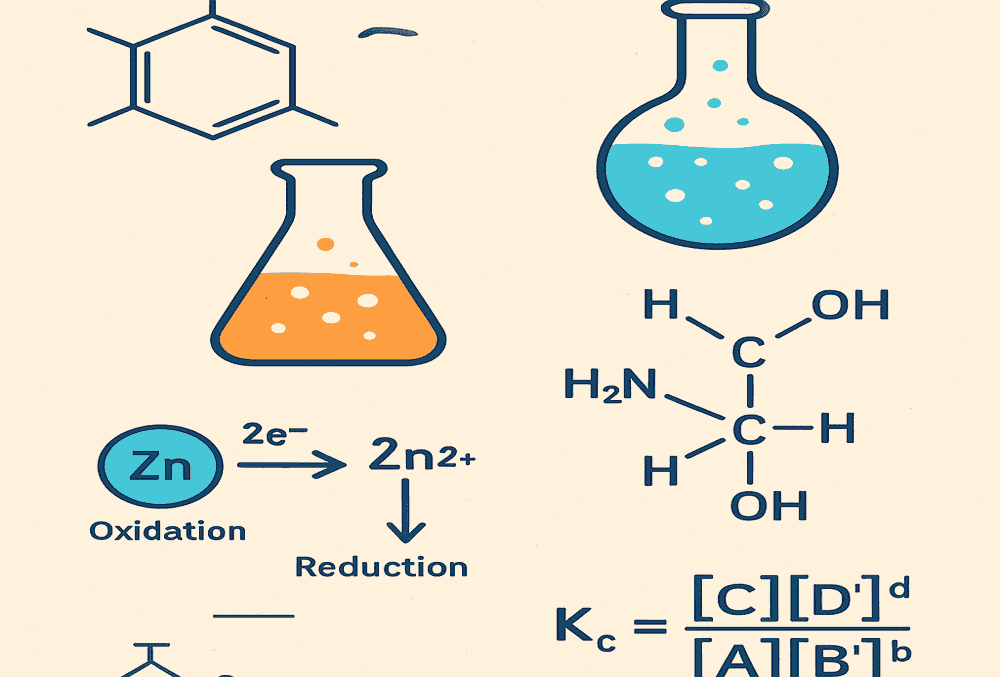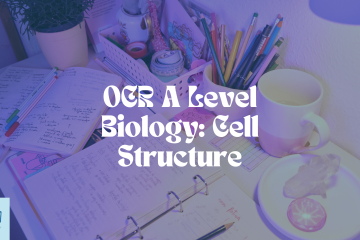When preparing for A Level Chemistry, mastering foundational concepts is key to achieving high grades. At BrightMindTutors, we believe that focusing on essential questions can help students develop a deeper understanding of the subject and improve their exam performance. In this comprehensive guide, we explore the top 10 A Level Chemistry questions every student should know and why they matter.
Whether you’re revising for exams or just starting the course, this resource will give you the clarity and confidence to tackle A Level Chemistry like a pro.
1. What Is the Difference Between an Ionic and Covalent Bond?
Understanding chemical bonding is at the heart of chemistry. Students often confuse ionic bonds (formed through electron transfer between a metal and non-metal) and covalent bonds (formed when two non-metals share electrons).
Why It Matters: Bonding influences everything from melting points to solubility and reactivity. Many A Level questions test your ability to apply bonding principles to predict physical properties or explain reaction mechanisms.
Sample Exam Application: Explain the bonding in sodium chloride and how it affects its conductivity in solid vs. molten states.
2. How Do You Calculate Empirical and Molecular Formulae?
This classic question involves converting percentage compositions or masses of elements into the simplest whole number ratio (empirical formula) and using molar mass to determine the molecular formula.
Why It Matters: Molecular identification and stoichiometry rely heavily on this skill, which is a common feature of both multiple-choice and structured questions.
Key Tip: Always start by converting masses to moles, then simplify to the smallest whole number ratio.
3. What Is an Acid, Base, and Salt in Chemistry?
Acid-base chemistry appears in almost every paper. An acid is a proton donor, a base is a proton acceptor, and a salt is a product of the neutralization reaction between an acid and a base.
Why It Matters: From titration calculations to buffer solutions, a strong grasp of acid-base behavior is vital.
Practical Connection: A Level practicals often involve titrations, requiring accurate understanding of acid-base theory to interpret results.
4. How Do You Use the Ideal Gas Equation?
The equation PV = nRT connects pressure, volume, temperature, and moles. It appears in both physical chemistry and calculations involving gaseous reactions.
Why It Matters: Ideal gas law calculations are essential for questions involving reaction yields, molar volumes, and changes of state.
Bonus Tip: Always convert units properly — pressure in Pa, volume in m^3, and temperature in Kelvin.
5. What Is Enthalpy Change and How Is It Measured?
Thermochemistry questions often require students to calculate enthalpy changes (∆H) using bond enthalpies, Hess’s Law, or calorimetry data.
Why It Matters: Energy changes determine whether a reaction is feasible or not. They’re also crucial for understanding reaction mechanisms.
Sample Question: Calculate the enthalpy change for the combustion of methane using standard enthalpies of formation.
6. What Are Redox Reactions and How Do You Balance Them?
Redox (reduction-oxidation) reactions involve the transfer of electrons. Recognizing oxidation states and balancing redox equations are essential skills.
Why It Matters: Redox reactions underpin topics such as electrochemistry, transition metals, and titrations involving KMnO4 or K2Cr2O7.
Practice Tip: Use the oxidation state method to break complex redox equations into manageable steps.
7. How Do Equilibria Work and What Is Le Chatelier’s Principle?
Dynamic equilibrium occurs when the forward and backward reactions occur at equal rates. Le Chatelier’s Principle helps predict how systems respond to changes in concentration, temperature, or pressure.
Why It Matters: Equilibrium is a big topic in both AS and A2 levels. You may need to calculate Kc or Kp and explain shifts in equilibrium.
Visual Aid: Use ICE (Initial, Change, Equilibrium) tables to organize data for equilibrium calculations.
8. What Is the Role of Transition Metals in Catalysis and Complex Formation?
Transition metals exhibit variable oxidation states and form colored complexes. They act as catalysts in many industrial and biological processes.
Why It Matters: These properties appear in both theory and practical exam papers. Understanding them helps with synthesis, mechanism-based questions, and explaining observations.
Sample Exam Angle: Explain how Fe2+ acts as a catalyst in the iodide-persulfate reaction.
9. How Do You Predict the Products of Organic Reactions?
Organic chemistry is challenging because it requires both memory and logic. Being able to predict the products of reactions involving alkanes, alkenes, alcohols, haloalkanes, and carboxylic acids is critical.
Why It Matters: Synthesis questions often require multi-step reasoning. Recognizing functional groups and reagents is crucial.
Pro Tip: Create a reaction map or flowchart to visually track possible transformations.
10. What Is the Structure and Reactivity of Aromatic Compounds?
Benzene and its derivatives behave differently than alkenes due to delocalized π electrons. Students need to understand electrophilic substitution reactions, directing effects, and resonance structures.
Why It Matters: This question touches on structure, bonding, and reactivity — key themes in A Level chemistry.
Popular Reaction to Know: Nitration of benzene — conditions, mechanism, and uses.
Final Thoughts: Building Mastery with BrightMindTutors
If you can confidently answer these ten core questions, you’re well on your way to mastering A Level Chemistry. These topics form the foundation upon which more advanced ideas are built.
Struggling with any of these? A dedicated A Level Chemistry Tutor from BrightMindTutors can help you solidify your understanding, improve exam technique, and build confidence.
Our tutors work one-on-one with students to identify gaps in knowledge and provide structured revision plans. Whether you’re aiming for an A* or just need help passing your mocks, we’ve got your back.
Frequently Asked Questions (FAQs)
1. What is the hardest topic in A Level Chemistry?
Many students find organic synthesis and equilibrium calculations the most challenging due to their abstract nature and multi-step logic.
2. How can I improve at A Level Chemistry?
Practice past papers, review model answers, and get feedback from an A Level Chemistry Tutor at BrightMindTutors.
3. Are practical skills tested in A Level Chemistry?
Yes. Practical understanding is assessed in written papers and through Practical Endorsements.
4. Is tutoring worth it for A Level Chemistry?
Absolutely. Personalized tutoring targets your weak spots and boosts performance more efficiently than self-study alone.
5. How many hours should I study chemistry per week?
Aim for 6–10 hours weekly, including reading, problem-solving, and revision. Increase closer to exams.
Want to level up your chemistry scores? Book your free trial session with an A Level Chemistry Tutor at BrightMindTutors today.




